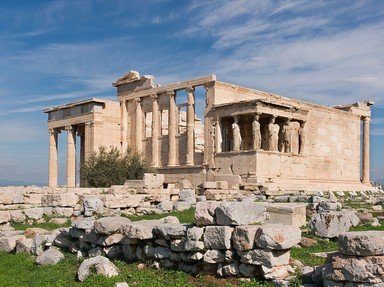Quiz Answer Key and Fun Facts
1. A complex belief system that lasted for over 3,500 years, Ancient Egyptian religion was based on the concept of maintaining "Ma'at" and repelling "Isfet". How do these two words translate into English?
2. The ancient Canaanite religion was practiced in the Levant during the Late Bronze Age. What name, also found in the Hebrew Bible to refer to God, was used to designate the deities in the Canaanite pantheon?
3. "Tophet" is a Hebrew word used to describe fields of buried urns found in Phoenician and Carthaginian archaeological sites. What kind of ritual, associated with the worship of the god Moloch, does this word refer to?
4. Yahwism is a fairly modern term given to an initially polytheistic religion in which (perhaps surprising) region?
5. During the Bronze Age, Anatolia (now the Asian portion of Turkey) was inhabited by Indo-European peoples such as the Hittites and the Luwians. These peoples' religion was based on the worship of Tarhunz, a god who, like the Greek Zeus, was associated with which aspect?
6. The Minoan civilization has been an endless source of fascination since the early 20th century, when the remains of the Knossos Palace were discovered. Based on the artifacts unearthed during excavations, which animals held a major role in Minoan religion?
7. The structure of an ancient Greek temple involved various parts designed and constructed according to strict rules and proportions. What was the purpose of the inner chamber known as "naos"?
8. Mystery religions were an important component of the religion of ancient Greece, appealing to those who were not satisfied with the public cult of the gods. What sanctuary hosted the most famous of these secret rites, based on the myth of Demeter and Persephone?
9. Though strongly influenced by ancient Greek religion, Etruscan religion had a number of unique features. What aspect, shared with the religion of ancient Egypt, was particularly emphasized by the Etruscans?
10. Which of the following was NOT one of the distinguishing features of religion in ancient Rome?
Source: Author
LadyNym
This quiz was reviewed by FunTrivia editor
trident before going online.
Any errors found in FunTrivia content are routinely corrected through our feedback system.
